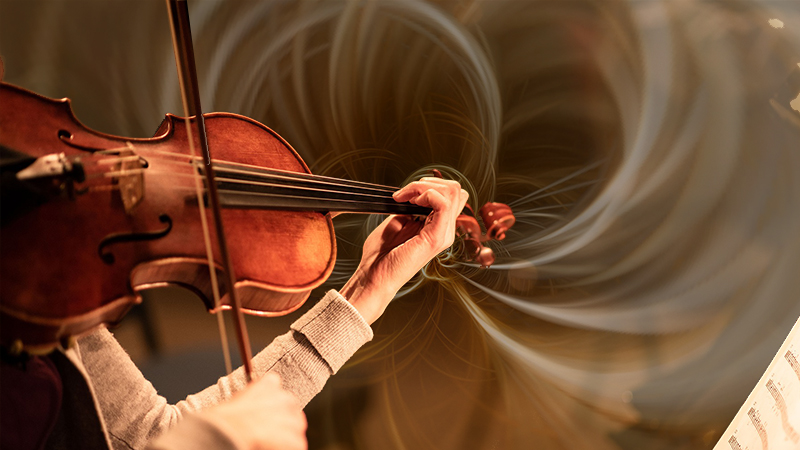By Laurie Niles: I can nearly always tell if my students have been practicing recently, whether they tell me or not. How?
Their violins tell me.
![violin resonating]() I teach young students and pre-college students, and while many tune their own instruments, I occasionally take their violins in hand for fine-tuning. After 30-some years of teaching, I can tell, from the resonance of each fiddle, whether the student has been playing it, and also if the student has been playing it in tune.
Granted, there are differences in quality among the fiddles in my studio, but I know each one well enough to discern its individual ups and downs.
I was reminded of this recently during a middle-of-the-summer lesson with an intermediate student whom I hadn't seen for a while. With everyone's vacations and traveling, it had been three weeks since the last lesson - a time span can sometimes spell neglect for a violin.
I teach young students and pre-college students, and while many tune their own instruments, I occasionally take their violins in hand for fine-tuning. After 30-some years of teaching, I can tell, from the resonance of each fiddle, whether the student has been playing it, and also if the student has been playing it in tune.
Granted, there are differences in quality among the fiddles in my studio, but I know each one well enough to discern its individual ups and downs.
I was reminded of this recently during a middle-of-the-summer lesson with an intermediate student whom I hadn't seen for a while. With everyone's vacations and traveling, it had been three weeks since the last lesson - a time span can sometimes spell neglect for a violin.
I took the violin in hand, started to tune it, and to my pleasant surprise - wow! The violin was alive and resonant, very responsive.
"This is a happy violin!" I said. And sure enough, my student had clearly been spending time with her fiddle - her assignments were thoroughly prepared, and she had made good progress.
What is behind my seemingly psychic powers to discern a student's practice level from his or her instrument's voice? It's simple and scientific.
When you play your violin, your playing causes the wood resonate. A violin resonates particularly well if you play it in tune, because it picks up the sympathetic vibrations from open strings. The more the wood vibrates, the more the wood becomes responsive. I've also heard the following (though I'm not a scientist or arborist): When the wood vibrates, it slowly but surely shakes out the dried sap that remains in the tiny vessels of the wood. That increases the surface area inside the soundbox, increasing the resonance. Playing the violin in tune, and playing it a lot, creates a virtuous cycle of resonance.
However, when a violin is not being played, it shuts down. The wood isn't resonating on a regular basis, and it gets harder to coax that wood into resonating. And frankly, when a violin is being played badly, it also shuts down. If you don't tune your violin (or tune it badly) it will not resonate in the same way - those perfect fifths create overtones that increase the vibrations. Out-of-tune fifths do not. If you don't consistently find that "sweet spot" where you are playing notes perfectly in tune, then the notes will lay dead, without creating overtones or sympathetic vibrations of other strings, thus increasing the wood's resonance. Said simply: when the wood doesn't vibrate, it doesn't resonate. The violin sounds quieter, responds less, and starts to shuts down.
So tune your violin, play it a lot, and strive for the sympathetic resonance that comes with good intonation. Practicing and playing with excellent intonation not only improves your playing, it actually improves the sound of your instrument!
You might also like:

- You can play in tune without a chromatic tuner: Ringing tones explained
- Intonation, a Physical Phenomenon
- Teaching a violin
Enjoying Violinist.com? Click here to sign up for our free, bi-weekly email newsletter. And if you've already signed up, please invite your friends! Thank you.